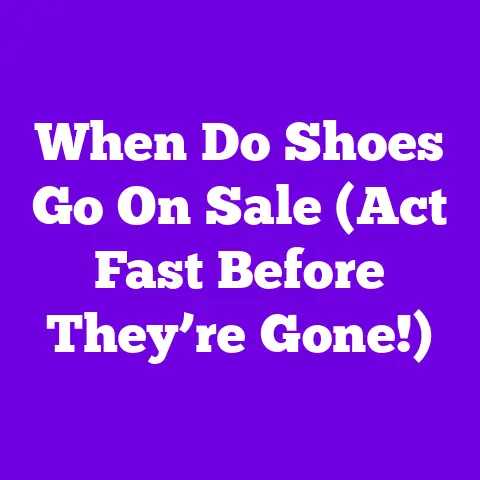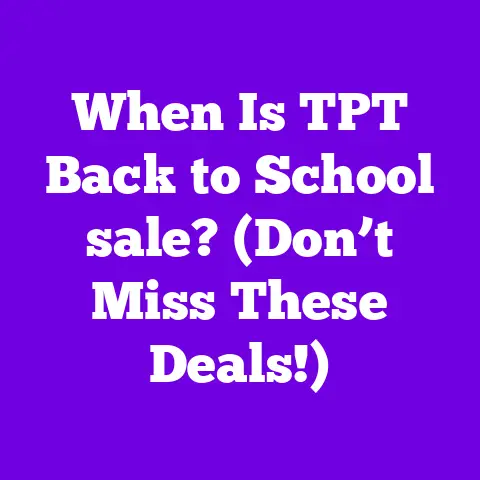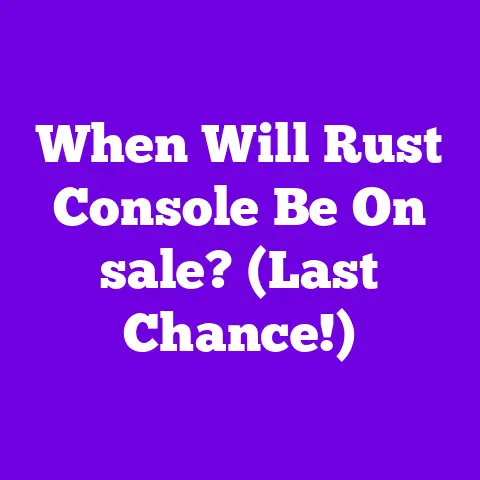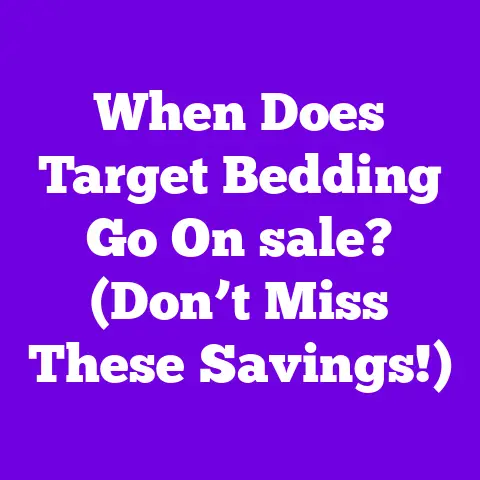Get sale Alerts: Never Miss a Deal! (Price drops Incoming!)
Do you remember the sheer joy of stumbling upon an unbelievable deal?
I do.
It was Black Friday, a few years back.
I was hunting for a new laptop.
I’d been saving for months, dreading the inevitable dent it would make in my bank account.
I’d resigned myself to paying full price for a decent machine.
Then, while idly browsing a retailer’s website, I saw it: a limited-time flash sale on the exact model I wanted, slashed by 40%!
The adrenaline surged.
My fingers flew across the keyboard, securing the purchase just moments before the deal expired.
The satisfaction of snagging that bargain, knowing I’d saved hundreds, was incredible.
That feeling – that’s what this article is all about.
In today’s world, where technology permeates every aspect of our lives, missing out on a great deal is almost a crime.
Sale alerts are your secret weapon, your digital guardian angel, ensuring you’re always in the know when prices drop on the items you crave.
In this article, I’ll explore how you can leverage sale alerts to maximize your savings in 2025 and beyond.
Section 1: Understanding Sale Alerts
Definition and Purpose
Sale alerts are notifications you receive when the price of a product you’re interested in drops below a certain threshold.
They’re designed to save you time, money, and the heartache of missing out on a fantastic deal.
Instead of constantly checking websites, you can set up alerts and let the technology do the work for you.
These alerts can come in various forms: email, push notifications on your phone, or even browser extensions.
How They Work
The magic behind sale alerts lies in the technology that powers them.
Various platforms and services offer these alerts, each with its own unique approach.
Here are some popular examples:
- Honey: This browser extension automatically searches for and applies coupon codes when you’re shopping online.
It also offers price tracking and drop alerts on specific products.
Honey is owned by PayPal, providing a degree of security and trust. - Rakuten (formerly Ebates): Rakuten offers cashback on purchases made through its platform.
It also provides sale alerts and coupon codes.
I’ve personally used Rakuten for years and have accumulated a significant amount of cashback. - CamelCamelCamel: This website focuses specifically on Amazon price tracking.
You can paste an Amazon product URL into CamelCamelCamel and set your desired price.
You’ll receive an email when the price drops to your specified level. - Keepa: Similar to CamelCamelCamel, Keepa offers detailed price history charts for Amazon products and allows you to set price alerts.
I find Keepa particularly useful for understanding price fluctuations over time. - ShopSavvy: This mobile app allows you to scan barcodes in physical stores and compare prices online.
It also offers sale alerts and deals from various retailers. - Google Shopping: Google Shopping allows you to track products and get notified when the price changes.
It leverages Google’s vast data network to find the best prices across the web.
These services typically work by regularly scanning product pages and comparing the current price to your desired price or the product’s historical price.
When a price drop is detected, you receive an alert.
Benefits of Using Sale Alerts
The advantages of using sale alerts are numerous:
- Saving Time: Constantly monitoring prices is time-consuming and tedious.
Sale alerts automate this process, freeing up your time for other activities.
I can attest to this; before using sale alerts, I wasted hours each week checking prices. - Reducing Impulse Buying: While it might seem counterintuitive, sale alerts can actually help reduce impulse buying.
By setting alerts for specific items you genuinely need or want, you’re less likely to make spontaneous purchases based on fleeting desires.
I’ve found that waiting for a price drop gives me time to consider whether I truly want the item. - Staying Updated on Product Availability: In some cases, sale alerts can also notify you when a product is back in stock.
This is particularly useful for limited-edition items or products that are frequently out of stock. - Capitalizing on Flash Sales: Flash sales are short-lived and often offer significant discounts.
Sale alerts ensure you don’t miss these fleeting opportunities.
I’ve snagged some incredible deals during flash sales thanks to timely alerts.
Section 2: The Evolution of Shopping in 2025
Trends in Consumer Behavior
By 2025, several key trends will continue to shape consumer behavior:
- The Continued Rise of Online Shopping: E-commerce will continue its upward trajectory.
The COVID-19 pandemic accelerated the shift to online shopping, and this trend is likely to persist.
According to Statista, e-commerce sales are projected to reach \$7.4 trillion worldwide in 2025 (https://www.statista.com/statistics/379046/worldwide-retail-e-commerce-sales/). - The Growing Importance of Sustainability: Consumers are becoming increasingly conscious of the environmental and social impact of their purchases.
They are more likely to support brands that prioritize sustainability and ethical practices.
A Nielsen study found that 73% of global consumers are willing to change their consumption habits to reduce their environmental impact (https://www.nielsen.com/us/en/insights/article/2018/global-consumers-seek-companies-that-care-about-environmental-issues/). - The Influence of Social Media: Social media will continue to play a significant role in purchasing decisions.
Influencer marketing, social commerce, and user-generated content will all influence consumer choices.
A report by Hootsuite found that 58.4% of the world’s population uses social media (https://hootsuite.com/resources/digital-trends). - Personalization and Customization: Consumers expect personalized experiences.
They want brands to understand their needs and preferences and offer tailored products and services. - Augmented Reality (AR) and Virtual Reality (VR): AR and VR technologies will become more prevalent in the shopping experience, allowing consumers to virtually try on clothes, visualize furniture in their homes, and explore products in immersive environments.
Technological Advancements
Advancements in AI and machine learning are enhancing sale alert systems in several ways:
- Personalized Alerts: AI algorithms can analyze your browsing history, purchase patterns, and preferences to deliver highly personalized sale alerts.
These alerts are more likely to be relevant to your interests, increasing the chances of you making a purchase.
I’ve noticed that the alerts I receive now are far more targeted than they were a few years ago. - Predictive Pricing Algorithms: Machine learning models can predict future price drops based on historical data, seasonality, and other factors.
This allows sale alert systems to notify you of potential deals before they even happen. - Image Recognition: AI-powered image recognition can identify products in images and videos, allowing you to set alerts for specific items you see on social media or in advertisements.
- Natural Language Processing (NLP): NLP can analyze product reviews and descriptions to identify key features and benefits, helping you make informed purchasing decisions.
The Role of Social Media
Social media platforms are becoming increasingly integral to the shopping experience.
Brands leverage platforms like Instagram, TikTok, and Pinterest to announce sales and engage with customers.
- Instagram Shopping: Instagram allows businesses to create shoppable posts and stories, enabling users to purchase products directly from the app.
- TikTok Shopping: TikTok is rapidly emerging as a major player in social commerce.
Brands are using TikTok to showcase products, run promotions, and engage with younger audiences. - Pinterest Shopping: Pinterest is a visual discovery platform that is well-suited for product discovery.
Brands can create shoppable pins that link directly to product pages. - Social Media Influencers: Influencers play a significant role in promoting sales and driving traffic to retailers’ websites.
Section 3: How to Set Up Sale Alerts
Step-by-Step Guide
Setting up sale alerts is generally a straightforward process. Here’s a step-by-step guide:
- Choose the Right App or Website: Select a platform that aligns with your shopping habits and preferences.
Consider factors such as the types of products you typically buy, the retailers you frequent, and the features you need. - Create an Account: Sign up for an account on your chosen platform.
You may need to provide your email address, create a password, and verify your account. - Customize Your Preferences: Configure your account settings to specify your interests and preferences.
This may include selecting categories of interest, setting your desired price range, and choosing your preferred notification method (email, push notifications, etc.). - Add Products to Your Watchlist: Search for the products you want to track and add them to your watchlist.
You can typically do this by pasting the product URL into the platform or by using the platform’s search function. - Set Your Desired Price: Specify the price at which you want to be notified.
You can typically set a specific dollar amount or a percentage discount. - Enable Notifications: Make sure that notifications are enabled for your chosen platform.
This will ensure that you receive alerts when prices drop.
Example: Setting up a Sale Alert on CamelCamelCamel for an Amazon product
- Go to the CamelCamelCamel website (https://camelcamelcamel.com/).
- Paste the Amazon product URL into the search bar.
- Click “Track Product.”
- Enter your desired price in the “Desired Price” field.
- Enter your email address in the “Email Address” field.
- Click “Create Price Watch.”
Tips for Effective Use
To maximize the effectiveness of sale alerts, consider these tips:
- Prioritize Wish Lists: Focus on setting alerts for items on your wish lists.
These are products you genuinely want or need, so you’re more likely to make a purchase when the price drops.
I always start by adding items to my Amazon wish list and then setting alerts for them. - Regularly Update Alert Preferences: Review your alert preferences periodically to ensure they are still relevant.
Remove alerts for products you’re no longer interested in and add alerts for new products. - Follow Favorite Brands and Retailers on Social Media: Many brands and retailers announce exclusive deals and promotions on social media.
Following them on platforms like Instagram, Facebook, and Twitter can give you a heads-up on upcoming sales. - Be Patient: Price drops don’t always happen immediately.
Be patient and wait for the right deal to come along. - Check Reviews: Before making a purchase, check product reviews to ensure the product meets your expectations.
- Compare Prices: Don’t rely solely on sale alerts.
Compare prices across different retailers to ensure you’re getting the best deal. - Consider Shipping Costs: Factor in shipping costs when evaluating a deal.
Sometimes, a lower price can be offset by high shipping fees. - Read the Fine Print: Pay attention to any restrictions or limitations associated with a sale, such as limited quantities or expiration dates.
Section 4: Spotlight on Major Retail Events in 2025
Key Sale Events
Here are some significant shopping events in 2025 that consumers should be aware of:
- Black Friday (November 28, 2025): The day after Thanksgiving is traditionally the biggest shopping day of the year.
Retailers offer deep discounts on a wide range of products. - Cyber Monday (December 1, 2025): Cyber Monday is the online equivalent of Black Friday.
Retailers offer online-only deals and promotions. - Amazon Prime Day (Likely in July 2025): Amazon Prime Day is a two-day sales event exclusively for Amazon Prime members.
It features deep discounts on a wide range of products. - Seasonal Sales: Retailers offer sales throughout the year to coincide with holidays and seasonal changes.
These include:- Spring Sales (March-April): Focus on home improvement, gardening, and outdoor products.
- Summer Sales (June-July): Focus on clothing, swimwear, and outdoor gear.
- Back-to-School Sales (August-September): Focus on school supplies, clothing, and electronics.
- Holiday Sales (November-December): Focus on gifts, decorations, and festive items.
Comparison of Sales
Different retailers approach these events in different ways.
Some offer deep discounts on a limited number of products, while others offer smaller discounts across a wider range of products.
Some retailers offer early access to sales for loyalty program members.
Here’s a comparison of how some major retailers typically approach these events:
Early alerts are crucial for maximizing savings during these peak times.
Many retailers offer early access to sales for loyalty program members or email subscribers.
Setting up sale alerts in advance of these events can help you snag the best deals before they sell out.
Section 5: The Future of Sale Alerts
Predictions for 2030
By 2030, sale alerts are likely to be even more sophisticated and personalized.
Here are some potential developments:
- AI-Powered Shopping Assistants: AI-powered shopping assistants will act as your personal deal hunters, proactively searching for the best prices and deals on the products you want.
- Integration with Wearable Devices: Sale alerts will be seamlessly integrated with wearable devices, such as smartwatches and fitness trackers, allowing you to receive notifications on the go.
- Augmented Reality Shopping: AR technology will allow you to virtually “try on” products before you buy them and see how they look in your home.
Sale alerts will be integrated into this AR experience, notifying you of price drops in real-time. - Blockchain-Based Loyalty Programs: Blockchain technology will be used to create decentralized loyalty programs that reward consumers for their purchases and engagement.
Sale alerts will be integrated into these programs, offering exclusive deals and discounts to loyal customers. - Hyper-Personalization: Sale alerts will become even more personalized, taking into account your individual preferences, shopping habits, and lifestyle.
Potential Challenges
Despite the potential benefits, consumers may face some challenges in the future:
- Information Overload: The sheer volume of sale alerts could become overwhelming.
Consumers will need to develop strategies for filtering and prioritizing alerts to avoid being bombarded with irrelevant information. - Algorithm Changes: Retailers and sale alert platforms may change their algorithms, making it more difficult to find the best deals.
Consumers will need to stay informed about these changes and adjust their strategies accordingly. - Privacy Concerns: The collection and use of personal data for personalized sale alerts could raise privacy concerns.
Consumers will need to be aware of how their data is being used and take steps to protect their privacy. - Fake or Misleading Alerts: There is a risk of receiving fake or misleading sale alerts from unscrupulous sources.
Consumers will need to be vigilant and verify the authenticity of alerts before making a purchase.
Conclusion
In conclusion, setting up sale alerts is a smart and effective way to never miss a deal in 2025 and beyond.
By leveraging the power of technology, you can save time, money, and the frustration of missing out on fantastic bargains.
From understanding the basics of sale alerts to mastering the art of setting them up and staying informed about major retail events, this article has provided you with the knowledge and tools you need to become a savvy shopper.
As technology continues to evolve, the world of shopping will undoubtedly change.
But one thing will remain constant: the thrill of securing the best deals and the satisfaction of knowing you’ve made a smart purchase.
So embrace the power of sale alerts, stay informed, and get ready to snag those incredible price drops in 2025 and beyond!






